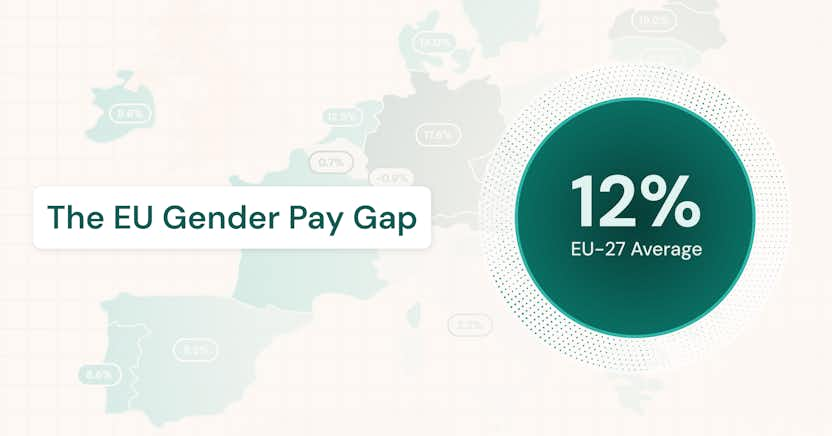State of California — Pay transparency and pay data reporting

Local requirement
State of California
In the US state of California, pay equity legislation is relatively progressive. It includes both a data reporting requirement and a pay transparency law. This article goes through the requirements for all aspects of the law and how PayEquity by beqom can help support employers.
Pay equity legislation and requirements in the US state of California
Within the US, the state of California has adopted relatively progressive legislation in support of pay equity. The pay data reporting requirement was introduced in 2021 and has since received updates that take effect early in 2023. The most recent legislation extends the pay data reporting requirements and adds more requirements for transparency. (See this article for more details and background.)
Overall, the laws outline a twofold responsibility for employers: annual pay data reporting and pay scale transparency requirements.
First, per the state’s pay data reporting requirements, employers must report their data to the state’s Civil Rights Department (CRD) by the second Wednesday of May every year. Reports are based on snapshot periods, which are chosen by the employer. The snapshot period can be any single pay period in the year’s final quarter.
There are two types of employee reports. The first is the payroll employee report, which is required for all employers with 100 or more employees. Organizations with multiple establishments should submit a single consolidated payroll employee report covering all establishments. The report follows a template, which groups workers based on job category (based on EEOC definitions), gender, race/ethnicity, pay band (defined according to the Bureau of Labor Statistics Occupational Employment and Wage Statistics survey), and establishment (for employers with multiple establishments).
For each group of payroll employees, employers should report the following:
- Mean hourly rate
- Median hourly rate
- Total hours worked
- The number of workers, broken down by remote worker status
For each row in this report, employers can feel free to add clarifying remarks.
The second report type is required for all employers with 100 or more workers hired through labor contractors. This report is known as the labor contractor employee report or the labor contractor report. It uses a template very similar to the payroll employee report, reporting the same key metrics and extending the template by adding information about the contracting company. It is also based on a snapshot period, but it does not need to be based on the same period as the payroll employee report.
There are substantial penalties for failing to meet the reporting requirements. A first violation can incur fines of up to $100 per employee, and a subsequent violation can cost up to $200 per employee.
The second part of California’s legislation addresses pay scale transparency. The state’s requirements aim to make pay information accessible to both current employees and job applicants. If asked by an employee or applicant, all employers must disclose the pay range (in the form of specific pay bands) of any job. They are also required to keep pay-related records for each employee for at least three years after the employee’s departure.
Employers with 15 or more employees are also subject to rules related to job listings: they must include the pay range for each posted job.
PayEquity by beqom support for California’s pay data reporting requirements
The PayEquity by beqom platform provides comprehensive functionality that helps California employers meet their annual reporting needs. As previously mentioned, California’s payroll employee report and labor contractor report are both template-based, and PayEquity by beqom’s pay data reports follow the state’s template. They are ready to export to Excel with just a few clicks and can be uploaded directly to the state’s online portal.
The following data for each employee is needed for PayEquity by beqom to generate California reports:
- Gender
- Race/ethnicity
- Hourly rate
- Total hours worked
- Job category
- Compensation amount from IRS W-2 form (this determines the employee’s pay band)
- Remote worker status
- Establishment (for organizations with multiple establishments)
- Contractor (for the labour contractor report)
Note that if you need some help defining job categories, PayEquity by beqom helps you map employees’ jobs to the 10 EEOC job categories before you create the report.
PayEquity by beqom support for California’s pay scale transparency requirements
To achieve and maintain compliance with California’s pay transparency requirements, organizations use our pay bands feature. This feature makes it simple to:
- Identify pay bands based on employee groups
- Visualize where employees fall within their pay bands and detecting if any fall outside their intended bands
- Calculate raises to correct the compensation of employees who fall below their pay bands
- Ensure that pay for new hires or promoted employees is in line with their pay bands
With this functionality, the pay bands feature helps organizations maintain the compensation structure they want. Employers can then feel confident in their transparency – whether posting the pay band in a job listing or talking to a current employee about their salary.
Further support in PayEquity by beqom
Beyond just the state level, PayEquity by beqom supports employers in meeting a couple of key federal reporting requirements in the US:
- EEO-1 demographic data – generates an EEO-1 report in just a few clicks
- Helps with some requirements of OFCCP reporting for federal contractors
PayEquity by beqom can also help with much more than just reporting. It’s a holistic solution for many challenges involving compensation structures and broader workplace equity:
- Measures gender or other demographic pay gaps and suggests targeted raises to close them
- Provides ongoing decision support that ensures pay equity with every raise, promotion, and new hire
- Offers insights into equity questions such as diversity in hiring and promotion
Please note that while this local resource information has been compiled by beqom's legal and pay equity experts, it does not constitute legal advice.
More on local requirements and reporting
beqom's pay equity tools make complying with local requirements and regulations easier than ever before, allowing organizations to conduct pay equity analyses to identify any pay disparities.

Sweden — Pay equity analysis and reporting (lönekartläggning)
Every year, Sweden requires all employers to conduct a pay equity analysis (lönekartläggning) with a few key requirements. Find out more on our page.

State of California — Pay transparency and pay data reporting
In the US state of California, pay equity legislation is relatively progressive. It includes both a data reporting requirement and a pay transparency law. This article goes through the requirements for all aspects of the law and how PayEquity by beqom can help support employers.

Ireland — Gender pay gap reporting
This page provides information for organizations looking to understand and respond to Ireland’s Gender Pay Gap Information Act 2021.

France — Gender equality index
For companies operating in France, this article provides information on pay equity reporting and associated legal requirements.

Israel — Gender pay gap reporting
This resource article provides information about Israel’s gender pay gap reporting requirements and an overview of how to create and complete the reports.

Spain — Pay equity analysis and reporting
Pay equity laws in Spain ask all companies to keep a remuneration register, with additional analysis and reporting for slightly larger employers.

Local requirements - Pay equity analyses and reporting
Get an overview of some of the local pay equity requirements that many of our customers need to fulfill, and achieve effortless compliance today.

USA - Pay data reporting (EEO-1)
Although no gender pay gap reporting per se is required, some demographic data reporting is required in the US.

UK — Gender pay gap reporting
The United Kingdom (UK) requires gender pay gap reports from organizations of a certain size. This page outlines the UK requirements and how to get started.

Norway — Pay equity analysis and reporting
In Norway, employers with 50+ (sometimes 20+) workers must prepare annual and biannual pay equity reports. This page outlines the requirements.

Canada — Pay equity analysis and reporting
Companies operating in Canada should be prepared to comply with federal pay equity analysis and reporting laws. Some provincial regulations also exist. We give readers an overview of Canada’s detail-oriented requirements.
Recent blogs on Pay Equity

The EU Gender Pay Gap
The average EU gender pay gap sits at a persistent 12%. Download our new infographic for an overview of the gender pay gap across member states and the national transposition status of the EU Pay Transparency Directive.
Read more

Humanizing Compensation: Why Pay Is More Than Just a Paycheck
Compensation is about more than just a paycheck. Discover why it's essential to humanize compensation to build trust and create a more engaged workforce.
Read more

A Condensed Version of The U.S. Pay Transparency Index 2025
The U.S. Pay Transparency Index analyzes more than 13,000 job listings in the U.S. to uncover the truth behind pay transparency laws, and reveals how many companies are following the law.
Read more
